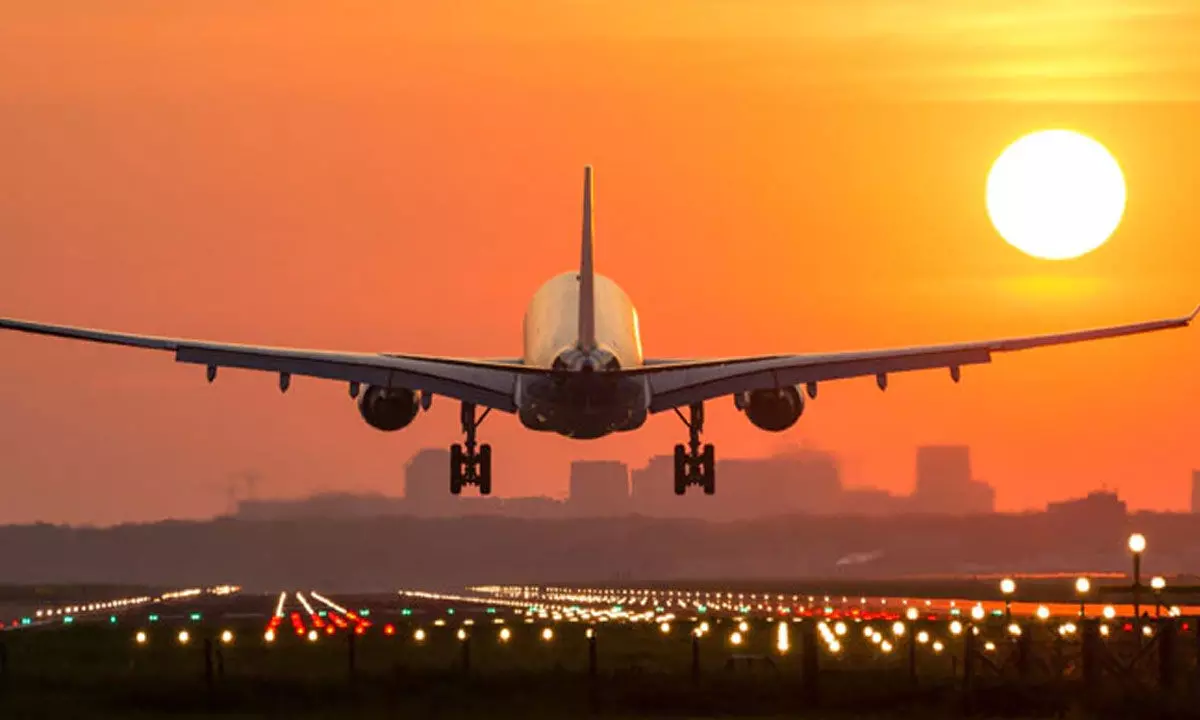High oil prices dash aviation recovery hopes in 2022
It is expected Brent price will average $108/bbl in 2Q22 and $102/bbl in H2 of 2022
image for illustrative purpose

The Brent crude oil spot price averaged $117 per barrel (bbl) in March, a $20/bbl increase from February. Crude oil prices increased following the further invasion of Ukraine by Russia. Sanctions on Russia and other actions contributed to falling oil production in Russia and created significant market uncertainties about the potential for further oil supply disruptions. These events occurred against a backdrop of low oil inventories and persistent upward oil price pressures. Global oil inventory draws averaged 1.7 million barrels per day (b/d) from the third quarter of 2020 (3Q20) through the end of 2021. It is estimated that commercial oil inventories in the OECD ended 1Q22 at 2.61 billion barrels, up slightly from February, which was the lowest level since April 2014.
It is expected the Brent price will average $108/b in 2Q22 and $102/b in the second half of 2022 (2H22). We expect the average price to fall to $93/b in 2023. However, this price forecast is highly uncertain. Actual price outcomes will depend on the degree to which existing sanctions imposed on Russia, any potential future sanctions, and independent corporate actions affect Russia's oil production or the sale of Russia's oil in the global market. In addition, the degree to which other oil producers respond to current oil prices, as well as the effects macroeconomic developments might have on global oil demand, will be important for oil price formation in the coming months. Although there is reduced Russia's oil production in the forecast, it is expected that global oil inventories will build at an average rate of 0.5 million b/d from 2Q22 through the end of 2023, which it is expected to put downward pressure on crude oil prices. However, if production disruptions - in Russia or elsewhere - are more than what is forecast, the resulting crude oil prices would be higher than the current forecast.
It is estimated that 98.3 million b/d of petroleum and liquid fuels was consumed globally in March 2022, an increase of 2.4 million b/d from March 2021. It is forecast that global consumption of petroleum and liquid fuels will average 99.8 million b/d for all of 2022, which is a 2.4 million b/d increase from 2021. However, this forecast is down by 0.8 million b/d from last month's forecast as a result of downward revisions to global GDP growth from Oxford Economics. It is forecast that global consumption of petroleum and liquid fuels will rise by 1.9 million b/d in 2023 to average 101.7 million b/d. The outlook for economic growth and oil consumption in Russia and surrounding countries continues to be highly uncertain.
The EIA predicts that by 2025 Brent crude oil's nominal price will rise to $66/b. By 2030, world demand is seen driving Brent prices to $89/b. By 2040, prices are projected to be $132/b. By then, the cheap oil sources will have been exhausted, making it more expensive to extract oil. By 2050, oil prices could be $185/b.
The EIA assumes that demand for petroleum flattens out as utilities rely more on natural gas and renewable energy. It also assumes the economy grows around 1.9 per cent annually, while energy consumption decreases by 0.4 per cent a year.
Future oil prices will depend greatly on innovations in energy, transportation, and other industries as societies work to become less fossil fuel dependent.
But overall, 2022 no longer holds the promise of a gleaming post-recession recovery that had been hoped for.
Demand will continue choppy for some months to come, at least, as capricious border closures persist, encouraging consumers to look elsewhere for their discretionary spending. Worse still, business travel will be muted, destroying the high yielding fares that sustain long haul international travel.
So, as the world's economies stagger back into growth, still burdened by supply chain disruption, it's a most unwelcome development that oil prices should hit a seven year high in the past week to 21-Jan-2022, Brent Crude ending at just under $88 a barrel.
Moreover, Goldman Sachs has suggested the price would climb to $100 in 3Q2022 – not as big a rise as it perhaps sounds, only another $11 from current levels. Part of the rises, are attributed to shortage of oil supplies, as producers and users have allowed stocks to decline. It would not be the first time a large and influential financial institution has predicted triple digit oil; without being unduly cynical, price volatility and higher prices offer better trading prospects. IATA's reporting on jet fuel prices – jet fuel is a distillate from the crude oil – shows however that the airlines are already paying over $100 for their fuel.

